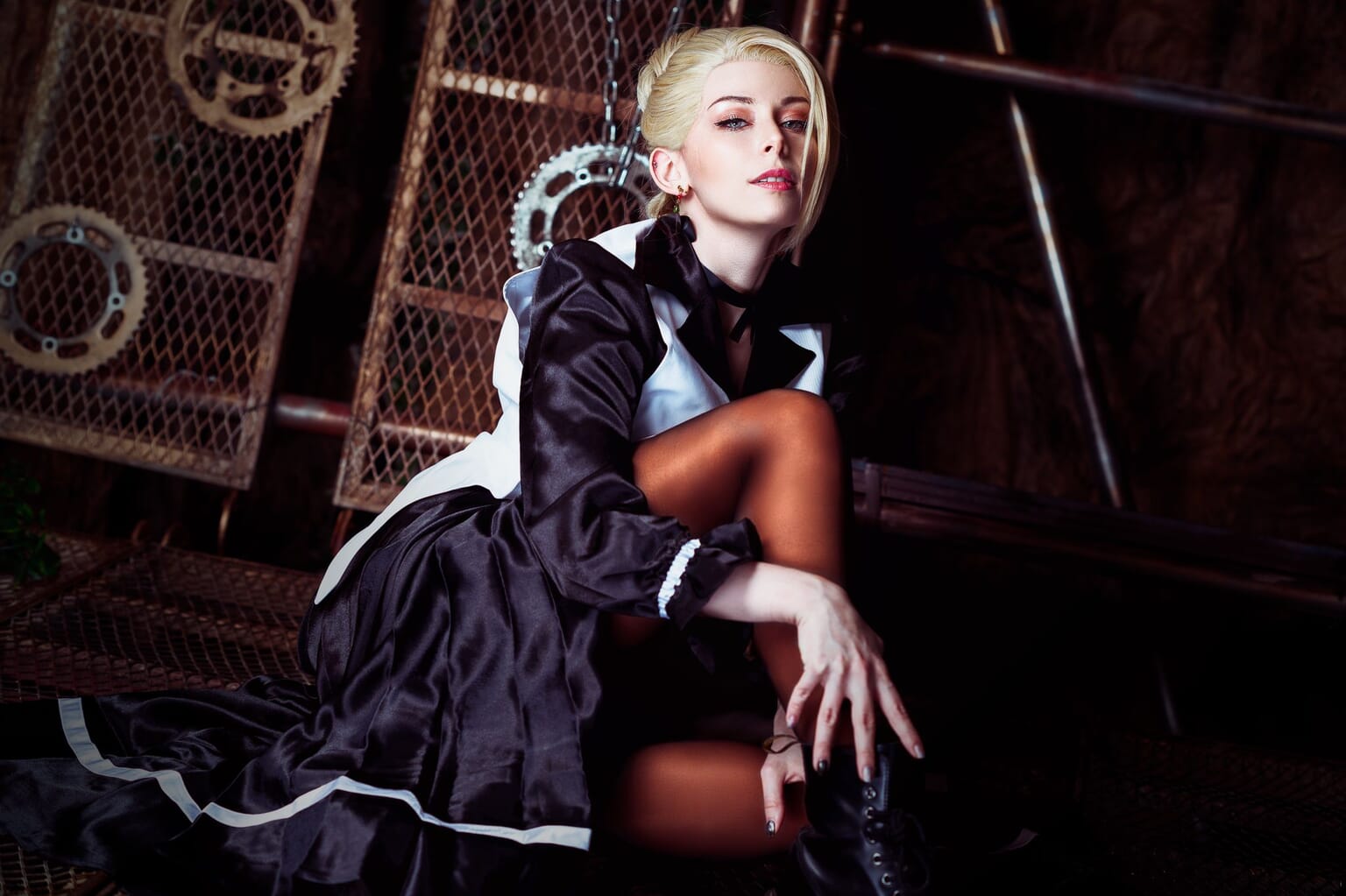Being a nerd was something that ran in the family for Eleonora Aureliana Guglielmi, or as she’s better known online, Yuriko Tiger. She credits her father as the original video game otaku, who gifted her a PlayStation 1 alongside Tekken, one of her first fighting games. No one could have imagined that this would one day come full circle as she is now an official cosplayer for Bandai Namco, having cosplayed the likes of Lili (Tekken 5) and Josie Rizal (Tekken 7). This and much more, Guglielmi has achieved through building a multi-faceted entertainment career here in Japan.
Guglielmi learned about cosplay from a young age but growing up in Italy meant there weren’t many resources. She recalls the effort she had to put in for her very first cosplay, Haruhi Suzumiya, at the age of 13. With no means of purchasing a costume, she cut her own hair short and begged her grandmother to make the dress for her.
Hustling and saving up money continued to be a theme as she explored cosplay in her home country. Guglielmi remembers having to pay an exorbitant fee before waiting six months to receive an Angelic Pretty Lolita dress from Japan. Despite this, she persisted.
“Cosplay was paradise to me,” she says. “It seemed like such a wonderful world where you can be any character you wanted to be. It became such a positive thing that I wanted to become a cosplayer so I could share that same emotion with other cosplayers and cosplay enthusiasts around the world.”
View this post on Instagram
The Challenges of Crosscontinental Entertainment
At 19, Guglielmi moved to Japan to study the language. Initially, she was shy, but she forced herself to type in Japanese on Twitter to practice. On weekends, she looked for cosplay conventions and meetups to connect with other like-minded individuals. It wasn’t long before she was discovered by an agency and a Japanese TV program that connected with her and asked her to appear on their show.
“I was crying my eyes out five minutes before the program, panicking over what I was going to do or say,” recalls Guglielmi. “My agency must have been freaking out then as well, but as soon as the cameras came to me, I completely stopped. I was able to not only speak Japanese but put on my biggest smile. I realized then that I had a talent for improvisation and that this was something I could push myself to keep doing.”
Being ‘discovered’ didn’t come without its challenges. There were situations where she worked with men or more senior people whose insecurities meant she had to feign stupidity to allow them to feel superior. When she starred in a drama, Guglielmi recalls racist and discriminatory behavior from a make-up artist who refused to do her make-up as she was a foreigner and “just a cosplayer.” As her following grew, it became harder to juggle the expectations of her diverse community.
She dabbled in a punk phase during the pandemic, which her overseas fans loved but her Japanese fans hated. Meanwhile, her Italian fans often don’t understand, or sometimes judge, her behavior on Japanese shows such as the exaggerated reactions or higher pitched voice, which is the norm in the entertainment world here.
View this post on Instagram
Cosplay Around the World
Globalization and the internet have made cosplaying in Japan and Italy similar experiences but there remain stark differences. According to Guglielmi, cosplay in Japan is still inevitably tied to gravure idol work where cosplayers don’t necessarily have to be otaku, they just need to play the role of a model. The nature of the entertainment industry in Japan also means talents may not be able to show their personalities, as there is a clear distinction between their private and public images. In contrast, in Italy famous cosplayers are seen as celebrities and that can come with the kind of drama you might expect from Hollywood A-listers.
However, for Guglielmi, being a foreigner in Japan means straddling the line of not being Japanese while still adhering to some of the rules.
“If you’re trying to build a cosplay career in Japan, you still need to think about the kind of audience you want to attract,” she says. “There are many cosplayers who live in Japan but focus on an overseas demographic. I have fans both in and outside of Japan and it’s impossible to please everyone. Working with the Japanese entertainment industry means you do need to assimilate to some of their culture. There’s the concept of honne-tatemae (one’s true feelings contrasted with those displayed in public) here which I understand, but as much as possible I try to be myself. I don’t have two sides.”

Cosplay is Art
Many might consider cosplay as merely fan service because some of the popular pieces of work are ones that are risqué. While Guglielmi does think that appealing to fans is an element of it, this shouldn’t discredit the load of work involved. Content creation is one of the most important aspects of cosplay these days, and with that comes the increasing costs due to higher quality demands and having to focus on the numbers on social media.
“Cosplay is not just showing your boobs or your hips and calling it a day,” she says. “It is art. For me personally, I spend a lot of time thinking about my projects, crafting what I need and developing the character that I want to portray. I don’t simply put on a wig, I consider how I can walk like my character, talk like my character and convey her likes and dislikes. I also have to think about where I want to shoot and the photographer that I want to work with, what kind of goods I’d like to produce with my content and how to promote it to my community.”
View this post on Instagram
One of Guglielmi’s self-published photobooks features images of herself dressed as an alluring elf. It’s titled Elnora, an elven name that Guglielmi chose specifically as it means light and of pure heart. Within the book are also images of Vanora, a dangerous sister to Elnora — who is much sexier. This concept of duality in her photobook is something Guglielmi created to give her the freedom to express a character in two different ways.
“There are actually many religious meanings and references in this book. I did a lot of research to produce these details that you can find in the naming, the way it’s shot and the background setting. But this something most people will overlook,” she says.
View this post on Instagram
Another cosplay Guglielmi is famous for doesn’t feature her face or body at all. It’s an entire fur suit of Sonic the Hedgehog, one of her favorite characters. Each part was handmade by Guglielmi herself, during a time when fur suits weren’t all that common. A significant monetary investment was required plus many months of hard work, but it remains one of her most well-recognized cosplays to date.
“Cosplay has helped me to grow as a person and discover what my real passions are,” says Guglielmi. “It’s hard to just be a cosplayer these days, you need to be an artist. But the most important thing is to still remember how you feel and to always have fun.”
Guglielmi’s agency is currently guiding her toward building a music career as a DJ. There is also talk of her entering the digital space. Like many other industries, entertainment is where one must continue to adapt, and Guglielmi’s ever-evolving career is a true testament to that.









